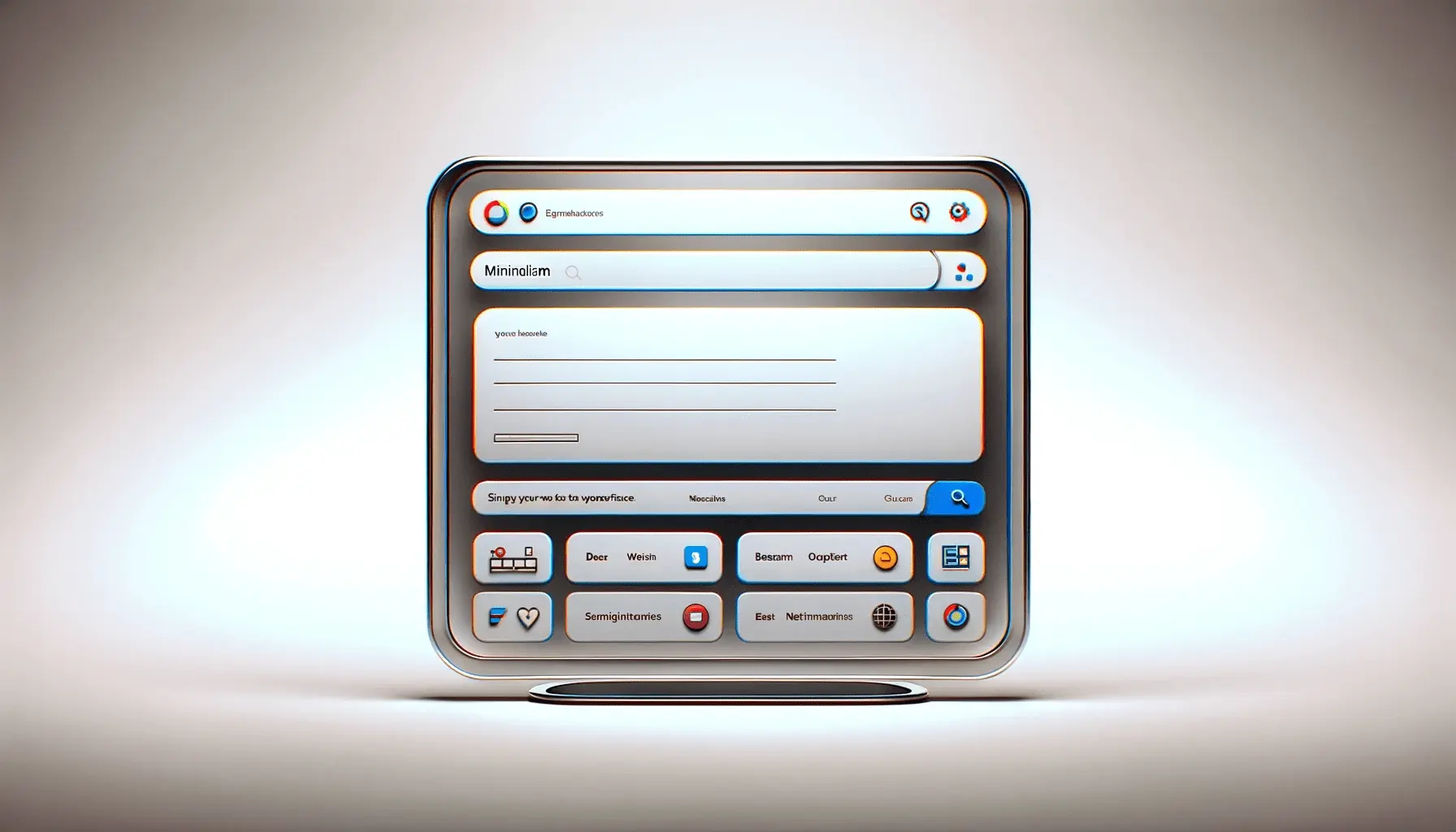The digital landscape of travel has transformed significantly over the past decade, with user experience (UX) at the forefront of this evolution.
In the realm of travel website design, the emphasis on UX is more than just a trend; it’s a fundamental component that can dictate the success or failure of a travel platform.
The importance of UX in travel website design cannot be overstated, as it directly influences how users interact with the site, their level of engagement, and ultimately, their decision-making process regarding their travel plans.
Travel websites serve as the digital gateway to the world’s wonders, offering a plethora of options for accommodation, flights, and experiences.
With such a vast array of information and choices available, users demand not only accuracy and speed but also a seamless, intuitive, and enjoyable browsing experience.
This is where the art and science of UX design come into play, crafting a user journey that is both informative and delightful, guiding potential travelers from initial curiosity to final booking with ease and efficiency.
- The Role of UX in Travel Decisions
- User Reviews and Testimonials
- Mobile Responsiveness and Accessibility
- Personalization and User Engagement
- Secure and Streamlined Booking Process
- Interactive Maps and Location-Based Services
- Analytics and User Feedback for Continuous Improvement
- Embracing the Future of Travel Website Design
- FAQs on User Experience in Travel Website Design
The Role of UX in Travel Decisions
User experience design in travel websites plays a pivotal role in shaping travelers’ decisions.
A well-designed UX can effectively communicate travel options, simplify the booking process, and provide valuable insights and recommendations, thereby enhancing the overall decision-making process for users.
The goal is to create a user-centric platform that anticipates and addresses the needs, preferences, and pain points of travelers, making their planning phase as smooth as possible.
From the moment users land on a travel website, every element of the UX—from navigation menus and search filters to content layout and call-to-action buttons—needs to be strategically designed to lead them towards making informed and confident travel decisions.
This involves a deep understanding of user behavior, preferences, and the typical journey a traveler undertakes when planning a trip online.
Navigation and Search Functionality
One of the first aspects a user interacts with on a travel website is the navigation and search functionality.
Intuitive navigation and a robust search system are crucial for helping users find the information they’re looking for without frustration.
This includes clear categorization of travel services, easy-to-use search filters, and predictive search features that can make recommendations based on user input and past search behavior.
Effective search functionality not only improves the usability of the site but also enhances the user’s satisfaction by providing quick and relevant results.
Incorporating features such as autocomplete suggestions, filter options for refining search results, and the ability to compare different travel options side by side can significantly impact the user’s ability to make decisions efficiently.
Ensuring that navigation and search functionalities are user-friendly is key to retaining visitors and converting them into customers.
Visual Design and Content
The visual design and content of a travel website also play a significant role in the user experience.
High-quality images, videos, and engaging descriptions can inspire and motivate users to explore further and commit to bookings.
Visual content should be strategically placed to highlight the unique features of destinations, accommodations, and experiences, making the offerings more appealing and tangible to the user.
Moreover, the content should be organized in a way that is easy to read and understand, with clear headings, bullet points, and short paragraphs.
Providing users with comprehensive, yet concise information about travel options helps them make informed decisions without feeling overwhelmed by too much text or technical jargon.
User Reviews and Testimonials
User reviews and testimonials are invaluable assets for travel websites, significantly influencing the decision-making process of potential travelers.
They offer authentic insights and firsthand experiences from other travelers, providing a level of trust and credibility that cannot be achieved through marketing content alone.
Incorporating user reviews and ratings into the design of a travel website can greatly enhance the user experience by offering social proof and helping users make informed choices.
Displaying reviews prominently on service pages, such as hotel or tour listings, allows users to quickly gauge the quality and suitability of the offerings.
Moreover, providing filters to sort reviews by date, rating, or traveler type (e.g., families, solo travelers, couples) can help users find the most relevant feedback for their specific needs.
This level of transparency and user-generated content not only builds trust but also fosters a community feeling among users, encouraging them to share their own experiences.
Integrating User Reviews
- Feature user reviews prominently on product and service pages to provide immediate insights.
- Implement a rating system that allows users to quickly assess the overall satisfaction of past travelers.
- Offer filters for sorting reviews to help users find the most relevant feedback for their needs.
- Encourage users to submit their own reviews by making the process simple and accessible.
Impact on User Decisions
The presence of user reviews and testimonials on a travel website can significantly impact user decisions.
Positive reviews can reassure potential travelers of the quality and reliability of the offerings, while negative reviews provide valuable feedback for service improvement.
By facilitating an open and honest dialogue between users and service providers, travel websites can create a more user-centric experience that prioritizes satisfaction and trust.
Moreover, reviews often contain practical information and tips that are not available in official descriptions, adding another layer of value for users planning their trips.
This additional context can help users make better-informed decisions that align with their expectations and preferences, leading to a more satisfying travel experience overall.
Incorporating a robust review system into travel website design is essential for building trust, fostering community, and enhancing the overall user experience.
Mobile Responsiveness and Accessibility
In today’s digital age, ensuring that travel websites are fully responsive and accessible across all devices is not just a preference but a necessity.
With a significant portion of travel-related searches and bookings made on mobile devices, a seamless mobile user experience can greatly influence a user’s decision to book through a travel website.
Mobile responsiveness ensures that the website’s design, content, and functionality automatically adjust to fit the screen size and resolution of various devices, providing an optimal viewing experience for users on the go.
Accessibility, on the other hand, refers to the design and development practices that make web content accessible to people with disabilities.
This includes providing text alternatives for non-text content, ensuring keyboard navigability, and making sure that the website can be used with screen readers.
By prioritizing accessibility, travel websites can cater to a wider audience, including those with visual, auditory, motor, or cognitive disabilities, thereby enhancing the user experience for everyone.
Designing for Mobile Users
- Implement a responsive design that adapts to different screen sizes and orientations.
- Optimize navigation for touch interactions, with larger buttons and simplified menus.
- Ensure that all features and content available on the desktop version are accessible on mobile devices.
- Minimize loading times with optimized images and streamlined code to improve the mobile browsing experience.
Enhancing Accessibility
- Use semantic HTML to provide meaningful structure and help screen readers interpret page content.
- Ensure sufficient color contrast between text and background to improve readability for users with visual impairments.
- Provide alternative text for images and multimedia content, allowing screen readers to describe them to users.
- Design forms and interactive elements to be fully navigable and operable with a keyboard alone.
By focusing on mobile responsiveness and accessibility, travel websites can offer a more inclusive and user-friendly experience.
This not only meets the needs of a diverse range of users but also reflects positively on the brand’s commitment to accessibility and inclusivity.
In the competitive travel industry, providing a seamless and accessible mobile experience can be a key differentiator, encouraging users to choose one platform over another for their travel planning and bookings.
A travel website’s success in today’s mobile-first world heavily relies on its ability to provide a responsive and accessible user experience across all devices.
Personalization and User Engagement
Personalization in travel website design is a powerful tool for enhancing user engagement and satisfaction.
By tailoring the browsing and booking experience to individual user preferences and behaviors, travel websites can make users feel valued and understood, leading to increased loyalty and conversion rates.
Personalization can range from recommending destinations and activities based on past searches to customizing communication and offers for repeat visitors.
Engaging users on a travel website also involves creating interactive elements that make the planning and booking process more enjoyable and informative.
This could include virtual tours of destinations, interactive maps, or quizzes to discover a user’s next dream vacation.
By investing in user engagement, travel websites can differentiate themselves in a crowded market, fostering a sense of discovery and excitement that resonates with the adventurous spirit of travelers.
Implementing Personalization Strategies
- Utilize user data and analytics to understand preferences and tailor recommendations accordingly.
- Offer customizable search filters that allow users to define their ideal travel experience.
- Create user profiles that save preferences, past bookings, and searches for a more personalized experience on return visits.
- Send personalized email newsletters with travel tips, deals, and recommendations based on user interests and past behavior.
Boosting User Engagement
- Incorporate interactive elements like virtual tours, interactive maps, and travel quizzes to engage users.
- Encourage user-generated content, such as travel stories and photos, to build a community and keep users returning.
- Implement a rewards program that incentivizes users to engage with the website and share their experiences.
- Use engaging visual content, such as high-quality images and videos, to captivate users and inspire travel dreams.
Personalization and user engagement are key to creating a memorable and effective user experience on travel websites.
By understanding and anticipating the needs of their users, travel platforms can create a sense of belonging and community.
This not only enhances the user experience but also drives loyalty and repeat business, crucial elements for success in the competitive travel industry.
In essence, a personalized and engaging travel website can turn the daunting task of planning a trip into an enjoyable and exciting journey.
Effective personalization and user engagement strategies can transform a standard travel booking process into a delightful and memorable experience for users.
Secure and Streamlined Booking Process
The booking process is the culmination of the user’s journey on a travel website, where design and functionality must converge to offer a secure, straightforward, and reassuring experience.
A streamlined booking process minimizes obstacles and simplifies decision-making, encouraging users to complete their purchases with confidence.
Security, particularly in handling personal and payment information, is paramount to gaining and maintaining user trust.
Ensuring that the booking interface is intuitive and that all transactions are secure can significantly impact the overall user experience and the website’s conversion rates.
Key elements of a successful booking process include clear information architecture, transparent pricing, multiple payment options, and immediate confirmation messages.
By reducing friction and providing reassurance at every step, travel websites can facilitate a smooth transition from browsing to booking, enhancing user satisfaction and loyalty.
Optimizing the Booking Interface
- Design a clean, clutter-free booking interface that highlights essential information and actions.
- Use progress indicators to show users where they are in the booking process and what steps remain.
- Provide clear, concise descriptions of each booking option, including cancellation policies and any additional fees.
- Implement auto-fill and error detection features to simplify form completion and reduce user frustration.
Ensuring Transaction Security
- Adopt robust encryption methods to protect user data and payment information during transactions.
- Display security badges and certifications prominently to reassure users of the website’s commitment to data protection.
- Offer a variety of payment options, including credit cards, PayPal, and other secure online payment systems, to accommodate user preferences.
- Send immediate confirmation emails or messages upon successful booking, providing users with a record of their transaction and peace of mind.
A secure and streamlined booking process is essential for converting users into customers on a travel website.
By focusing on user needs and minimizing barriers to completion, travel platforms can enhance the overall user experience, leading to higher satisfaction and increased bookings.
In the competitive travel industry, the ease and security of the booking process can be a significant differentiator, making it a critical area for UX design and optimization.
A well-designed booking process that prioritizes security and user convenience can significantly enhance the overall user experience and drive conversions on travel websites.
Interactive Maps and Location-Based Services
Interactive maps and location-based services are indispensable tools in modern travel website design, enhancing the user experience by providing valuable spatial information and personalized recommendations.
These features allow users to explore destinations, accommodations, and attractions with ease, offering a dynamic and informative way to plan travel itineraries.
By integrating interactive maps, travel websites can help users visualize their travel plans, discover new places, and make informed decisions based on location proximity and accessibility.
Location-based services further personalize the user experience by offering recommendations and content tailored to the user’s current or desired location.
This can include local weather forecasts, nearby attractions, and personalized travel guides.
These services leverage the power of geolocation technology to deliver relevant and timely information, making travel planning more efficient and enjoyable.
Benefits of Interactive Maps
- Enable users to easily explore different regions, cities, and attractions, enhancing discovery and planning.
- Provide detailed information about specific locations, including photos, reviews, and available services.
- Allow users to customize their travel itineraries by saving favorite spots and creating personalized maps.
- Improve navigation and accessibility by offering directions and transport options for getting to and from destinations.
Utilizing Location-Based Services
- Offer personalized travel recommendations based on the user’s location or search preferences.
- Integrate local weather updates, event calendars, and cultural information to help users plan their visit.
- Provide location-specific alerts and notifications, such as special offers at nearby hotels or last-minute tickets to events.
- Enable location tracking for on-trip assistance, offering guidance and support as users explore new destinations.
Interactive maps and location-based services enrich the travel planning process, making it more interactive, personalized, and informative.
By leveraging these technologies, travel websites can significantly enhance user engagement and satisfaction, encouraging exploration and discovery.
In the digital age, where users seek convenience and personalization, these features are essential for creating a compelling and user-friendly travel platform.
Neglecting the integration of interactive maps and location-based services can result in a less engaging and informative user experience on travel websites.
Analytics and User Feedback for Continuous Improvement
In the dynamic field of travel website design, leveraging analytics and user feedback is crucial for continuous improvement and optimization of the user experience (UX).
Analytics provide valuable insights into user behavior, preferences, and interaction patterns, allowing designers and developers to make data-driven decisions.
User feedback, on the other hand, offers direct input from the users about their experiences, preferences, and the challenges they face while navigating the website.
Together, these tools enable travel websites to evolve and adapt to user needs, ensuring a more effective and enjoyable user journey.
Implementing regular analysis of user data and actively seeking feedback through surveys, feedback forms, and social media can highlight areas for enhancement and innovation.
This ongoing process of evaluation and adjustment is essential for staying competitive in the travel industry, where user expectations and technology trends are constantly changing.
Utilizing Analytics for UX Optimization
- Analyze user behavior patterns to identify popular pages, features, and potential bottlenecks within the website.
- Track conversion rates and drop-off points in the booking process to pinpoint areas for simplification and improvement.
- Use A/B testing to evaluate different design and content strategies, optimizing based on user engagement and feedback.
- Monitor site speed and performance analytics to ensure a fast and smooth user experience across all devices.
Encouraging and Implementing User Feedback
- Provide easy-to-use feedback forms and contact options for users to share their experiences and suggestions.
- Engage with users on social media platforms to gather insights and foster a community around the travel brand.
- Implement a user testing program to gather in-depth feedback on new features and designs before full-scale rollout.
- Regularly review and respond to user reviews and ratings, addressing concerns and highlighting improvements made based on user input.
By integrating analytics and user feedback into the UX design process, travel websites can continuously refine and enhance their offerings to meet and exceed user expectations.
This approach not only improves the usability and appeal of the website but also builds a loyal user base that feels valued and heard.
In the competitive and ever-evolving travel industry, a commitment to continuous improvement through analytics and user feedback is key to achieving long-term success and user satisfaction.
Adopting a data-driven approach to UX design, complemented by active user engagement and feedback, is essential for the ongoing optimization of travel websites.
Embracing the Future of Travel Website Design
The journey through the multifaceted landscape of travel website design underscores the pivotal role of user experience in shaping the future of travel planning and booking online.
As we’ve explored, from the initial allure of intuitive navigation and captivating visual design to the critical aspects of mobile responsiveness, personalization, and secure booking processes, each element plays a crucial role in crafting a user-centric platform.
The integration of interactive maps and the strategic use of analytics and user feedback further enhance the user’s journey, making it not just a means to an end but a delightful experience in itself.
Key Takeaways for an Optimized User Experience
- Intuitive navigation and search functionality are the cornerstones of user satisfaction, guiding users effortlessly through their travel planning journey.
- Personalization and user engagement strategies transform the travel booking process into an enjoyable and memorable experience, fostering loyalty and repeat visits.
- The importance of a secure and streamlined booking process cannot be overstated, as it directly influences conversion rates and overall trust in the platform.
- Interactive maps and location-based services enrich the travel planning process, offering users a dynamic and informative way to explore their options.
- Leveraging analytics and actively seeking user feedback are essential for continuous improvement and staying attuned to user needs and preferences.
In conclusion, the evolution of travel website design is an ongoing journey, with user experience at its heart.
As technology advances and user expectations grow, the importance of UX in travel website design becomes ever more apparent.
By prioritizing the user’s needs, preferences, and feedback, travel websites can not only meet but exceed expectations, setting new standards for the industry.
The future of travel website design is bright, with endless possibilities for innovation and enhancement, all aimed at making the user’s experience as informative, enjoyable, and seamless as possible.
Want your website to top Google search rankings? Leave the SEO to our professional agency!
FAQs on User Experience in Travel Website Design
Explore common inquiries about enhancing user experience in travel website design.
A user-friendly travel website offers intuitive navigation, fast loading times, mobile responsiveness, clear information, and easy booking processes.
Crucial, as a significant portion of users book travel and research destinations on mobile devices, demanding a seamless experience.
Yes, personalization tailors the browsing and booking experience to individual preferences, enhancing satisfaction and engagement.
User reviews provide social proof, build trust, and assist in the decision-making process by sharing firsthand experiences.
Interactive maps help users explore destinations, plan itineraries, and find attractions, improving engagement and planning.
By implementing robust encryption, displaying security certifications, and offering multiple secure payment options.
Fast loading speeds improve user satisfaction, reduce bounce rates, and are crucial for retaining visitors’ attention.
They offer insights into user behavior and preferences, guiding continuous improvement and personalization of the user experience.












